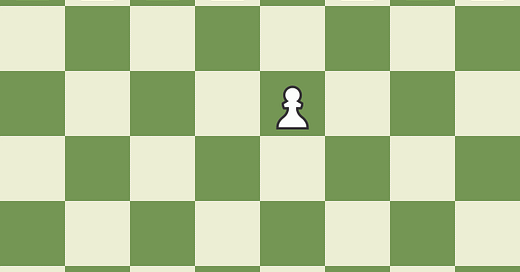Welcome to Zwischenzug! This newsletter goes out to 4,909 chess players. Sign up to get chess improvement advice delivered to your inbox.
Chessable can be a controversial topic. Some swear by it as a way of streamlining your training. Others accuse it of promoting mindless memorization. Well, I just released a course on Chessable, so of course I think it’s a valuable tool. But I also see a lot of players using it in ways that aren’t optimal, so here are my suggestions to get the most out of the site.
Do: Use the spaced repetition training. Some people use Chessable as a digital book, reading the material once and not returning to it. But if you don’t review the material, the chances that you remember it in a game are very low. The automated review schedule is the main value add of the platform and you should take advantage of it. Spaced repetition lets you build robust memory with a minimal time investment.
Do: Complete all reviews before learning new material. This prevents uncompleted reviews from piling up.
Do: Timebox your Chessable sessions. Timeboxing means capping an activity at a fixed time. I usually do ten minutes/day. I start with the reviews that are due. If I can’t finish them in ten minutes, it’s fine, they just wait until the next day. If I finish the reviews in under ten minutes I use the remaining time to learn new lines. You can choose to dedicate more than ten minutes a day if you have it. Especially if you’re just starting to learn a new opening, this can make sense. But if you consistently need much more than ten minutes to review your lines, you’re probably trying to learn way too many lines too quickly.
Don’t: Spend all your study time on Chessable, or openings more broadly. For most players, the game is rarely decided in the opening. The value of Chessable if used properly is that it allows you to learn openings more efficiently, freeing up time for the core chess learning activities: playing, reviewing, and solving exercises.
Don’t: Memorize an entire Lifetime Repertoire. These courses are valuable references, but trying to memorize them “cover to cover” is a massive waste of time for most players. In contrast, as a “100 repertoire” (100 lines total) my course is designed to be learned in its entirety.
Do: Learn the quickstarter chapter. This is manageable to learn in its entirety and should give you a solid base to start playing the opening.
Do: Practice your openings in blitz and training games. Review the lines you encounter.
Do: Use your courses as a reference. If someone plays a line you don’t know how to respond to, check if it’s covered in your course, and if it is, learn the line. You’ll be more motivated and have a better understanding of the position if you just faced it in a real game.
Don’t: Constantly switch openings and buy new courses. Yes, this is ironic for me to say as a Chessable author, but most people switch openings too often. You need to give yourself a chance to get enough experience in an opening, not only to learn the lines, but even more to get comfortable in the middlegame positions.
Do: Take advantage of the Short & Sweet courses. These are short versions of longer courses and they’re completely free. Given that I think many courses are too long anyway, this is a massive win-win! You can use the S&S to try out a new opening and use it in blitz. If you like it, you can include it in your repertoire as a changeup, or buy the full version of the course and deepen your knowledge.
Don’t: Mindlessly memorize lines without thinking about the reason behind the moves.
Do: Ask (and answer) questions. In my recent OTB tournament, I had a game as Black against IM David Vigorito where I followed a long line I had memorized from Sam Shankland’s Semi-Slav course. During the game, I became acutely aware that White had many options that I didn’t know how to deal with. Back home, I went through the line much more slowly, asking and answering questions.
When a different opponent repeated the line against me in Titled Tuesday, I felt much more confident and crushed him quickly.
I hope these ideas help you study more efficiently. What are you top tips for using Chessable?






This comes at an ideal time. I'm just coming back to chess and Chessable after a multi-year hiatus and have been wondering how to use Chessable and not get quickly overwhelmed. I'm a slow learner. Much appreciated.
An excellent article with alot of useful information .